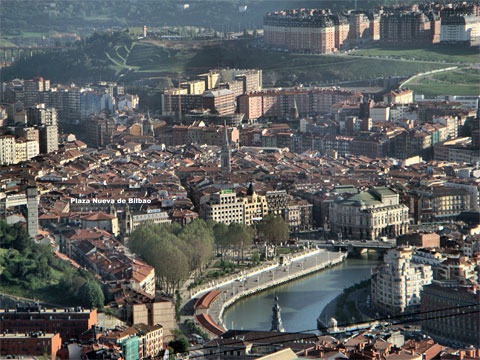Art tourism is a merge between tourism and culture and as a result increases the uniqueness of its location. (Community, City, Country). The artistic heritage and cultural life of an area can attract tourists and create better quality of life for those who live there. Arts and culture happens to be a potent force in the life of smaller cities, which makes them more attractive, thus increasing the chances for more visitors. A city or town with diverse cultural options and attractions like museums, restaurants, art galleries, operas, theaters, and symphonies are attractive not only to their residents, but for visitors because tourists can discover more and have memorable experiences. People might argue that the pursuit of creating tourism from art is another way of taking advantage of what art is and equate it to the negative attitude of the auctions houses and collectors. The artistic energy of art, in its wake of art tourism enhances one country’s global appeal.
The Guggenheim Effect suggests that a relatively unknown industrial city is transformed into a rapid, frequently visited tourist powerhouse. The Guggenheim effect was a success in Bilbao, Spain. A city that was in dire need of help-Unemployment was high and people were crying out for job-creating initiatives. When the Guggenheim was built there to solve the financial crises in the city, it surpassed everyone’s perception. It created enormous tourism revenue for the city that it changed the entire façade of the city and became one of the most frequently visited places for tourism. I believe the success was because this was done at the right time, a time when the world was becoming much more connected globally, and people were travelling much more and seeking cultural and artistic experiences. One factor, for this huge success, was that the Guggenheim was already making name, and for them to go to a place to build such a place might have been mid boggling to people that they wanted to see why. Now, we must not also forget that the architecture was a major influence. In the 1990’s a building of such design and size will was definitely going to create wave and it did. I believe the whole reason why people flocked the city was because of curiosity and to their amazement it was work it, and that is why after over 10 years since it’s opening it is still a much sort place to be. When a city is having such number of people coming in as tourist, off course once its bringing revenue to them, changes will be made in the city to keep it as a busy center for tourism and that is what they did. The government developed the place and it changed the city. Many companies and organizations also found themselves settling in there thus creating more jobs and improving the architecture and infrastructure of Bilbao.
Bilbao before the Guggenheim
There has been a proposal for another Guggenheim to be built in Abu Dhabi and already people are asking if the Abu Dhabi is going to be the next Bilbao. I don’t think it is going to happen. Abu Dhabi is a rather wealthy and luxurious city well established and has already its own tourism established. Yes, people are going to flock the place but it is not going to change much of what is there, actually, since it is already an expensive city, it is not going to be frequented by just anyone like it was for Bilbao, because not all can afford the cost of living there as they could for that of Bilbao. It will grow and generate income but the effect is not going to be as much as it will during the Bilbao period. I picture it as New York, having a new and expensive Guggenheim, What is going to change? Nothing much, because it already has a name for being a tourist site, where tourist always come. Its going to be the same people who tour New York, but this time just visiting the new Guggenheim.
Bilbao after the Guggenheim.
A new Guggenheim will always have its positive effect on where it is being built, but it is not going to be the same as it was in Bilbao.

